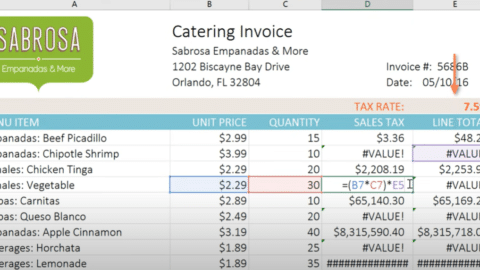Statistic Guide: Acceptance Sampling
Acceptance sampling is a cornerstone in the realm of quality control. It offers a strategic, statistically sound method for assessing product quality without inspecting every single item. As more businesses globally recognize its value, it’s crucial to understand not just its basic principles but also its intricacies, nuances, and best practices. This comprehensive guide will equip you with knowledge suitable for the digital age, where discerning Google users seek depth and clarity.
Table of Contents
Delving Deeper into Acceptance Sampling
What Is Acceptance Sampling, Really?
Acceptance sampling is a blend of art and science, a systematic process in which a subset (or sample) from a larger batch is meticulously inspected to gauge the quality of the entire batch. Instead of diving deep into the vast ocean of every product, you take a carefully measured cup, inspect it, and draw conclusions about the entire water body.
But why has this method garnered such attention? The advantages are manifold: from remarkable cost savings to significant time efficiencies. Moreover, in industries where the complete inspection could be destructive or highly time-consuming, acceptance sampling is often the only feasible option.
The Mathematical Muscle Behind the Method
Acceptance sampling leans heavily on statistical and probabilistic foundations. Also, the core belief is that a random sample, if chosen correctly, can mirror the quality attributes of the entire batch. This process doesn’t come without risks. There’s always a possibility, albeit often small, that the sample might not perfectly represent the batch. The skill lies in managing and mitigating these risks.
Why Acceptance Sampling Is More Relevant Than Ever
In our current era of mass production and globalization, the quantities in which products are produced and traded have ballooned. Inspecting every item in such large batches isn’t just impractical; it’s often impossible. That’s where acceptance sampling shines — offering a practical solution to a modern problem.
Implementing Acceptance Sampling: A Step-by-Step Guide
The Blueprint: Setting the Acceptance Criteria
This is the starting line. Here, businesses define the standards: What’s acceptable? What’s considered a defect? These definitions should be as clear as daylight to prevent ambiguity. For example, in the electronics industry, a defect might be a smartphone that fails to power on.
The Decision Matrix: Choosing the Sample Size
This step is a balancing act. A sample too small might miss defects, while one too large dilutes the efficiency benefits. Tools like the Operating Characteristic Curve can guide businesses in this complex decision, weighing factors like defect rates, batch sizes, and risk tolerance.
The Selection Process: Ensuring Genuine Randomness
True randomness is the heartbeat of acceptance sampling. Techniques can range from simple random sampling using lottery methods to more complex stratified sampling for heterogeneous batches.
The Verdict: Inspection and Decision Making
Armed with a sample and clear criteria, inspectors get to work. Their findings then inform the batch’s fate. Importantly, the decision thresholds should factor in both the quantity and severity of defects.
Acceptance Sampling in the Real World: Case Studies
Food Safety and Acceptance Sampling
Imagine a chocolate factory. Using acceptance sampling, they might evaluate a batch of cocoa beans for quality, flavor profile, and potential contaminants. If a certain number of beans in the sample fail the test, the entire batch might be subjected to further checks or even rejection.
Aerospace Components and Quality Checks
The aerospace industry, where component failure could have catastrophic outcomes, utilizes acceptance sampling for parts like screws or bolts. A batch of screws might be tested for tensile strength, and findings would determine if the batch is fit for aircraft assembly.
Navigating the Challenges: Expert Tips
Documentation: The Unsung Hero
Every step, decision, and result in the acceptance sampling process should be documented meticulously. This paper trail isn’t just for accountability; it’s a treasure trove of data that can inform future strategies.
Continuous Learning and Adaptation
The world is dynamic, and so are production processes. Businesses should routinely review and adjust their acceptance criteria, sampling techniques, and decision thresholds.
Training: The Key to Consistency
Even the best-designed acceptance sampling system can falter with inconsistent execution. Regular training sessions ensure that inspectors remain aligned with the system’s objectives and methodologies.
Acceptance Sampling in Action: A Detailed Example
The Scenario: Gourmet Coffee Beans
Let’s consider a company, Brewed Bliss, that imports gourmet coffee beans from various regions. Their reputation hinges on the quality of the beans they distribute. A bad batch could result in poor customer reviews and a tarnished brand image. However, due to the large quantities they import, inspecting every bean is impractical. Enter acceptance sampling.
Setting the Criteria
Before starting, Brewed Bliss defines what they consider as defects:
- Beans that are broken or chipped.
- Beans with mold or signs of rot.
- Beans that are significantly smaller than the average size.
Their aim? No more than 1% of beans should have any of these defects.
Determining the Sample Size
Using statistical methods and considering both the batch size and acceptable defect rates, Brewed Bliss decides to sample 400 beans from each batch of 10,000.
Random Sampling
The beans are well-mixed, ensuring a random distribution. An inspector then blindly selects 400 beans for inspection.
Inspection
Upon inspection, the inspector finds:
- 2 beans that are broken or chipped.
- 1 bean with signs of mold.
- 4 beans that are undersized.
That’s a total of 7 defective beans out of 400 or 1.75%.
Decision Time
Given their criteria of no more than 1% defective beans, this batch fails the quality check with a 1.75% defect rate in the sample. Brewed Bliss now has the choice of either rejecting the batch, re-inspecting it, or processing it further to remove defects.
Reflection and Iteration
This specific example demonstrates the efficacy and efficiency of acceptance sampling. Brewed Bliss managed to gauge the quality of a large batch with just inspecting a small fraction. Post-inspection, they can either negotiate with the supplier, consider a more thorough sorting process, or enhance their quality criteria.
Concluding Thoughts
Acceptance sampling is more than a statistical technique; it’s a philosophy of efficient quality control. In a world where consumers use platforms like Google to make informed decisions, understanding the depth and breadth of methods like acceptance sampling is indispensable. Also, this method doesn’t just save costs or time; it crafts a narrative of reliability and commitment to quality that resonates with consumers and stakeholders alike.
Hello, I’m Cansu, a professional dedicated to creating Excel tutorials, specifically catering to the needs of B2B professionals. With a passion for data analysis and a deep understanding of Microsoft Excel, I have built a reputation for providing comprehensive and user-friendly tutorials that empower businesses to harness the full potential of this powerful software.
I have always been fascinated by the intricate world of numbers and the ability of Excel to transform raw data into meaningful insights. Throughout my career, I have honed my data manipulation, visualization, and automation skills, enabling me to streamline complex processes and drive efficiency in various industries.
As a B2B specialist, I recognize the unique challenges that professionals face when managing and analyzing large volumes of data. With this understanding, I create tutorials tailored to businesses’ specific needs, offering practical solutions to enhance productivity, improve decision-making, and optimize workflows.
My tutorials cover various topics, including advanced formulas and functions, data modeling, pivot tables, macros, and data visualization techniques. I strive to explain complex concepts in a clear and accessible manner, ensuring that even those with limited Excel experience can grasp the concepts and apply them effectively in their work.
In addition to my tutorial work, I actively engage with the Excel community through workshops, webinars, and online forums. I believe in the power of knowledge sharing and collaborative learning, and I am committed to helping professionals unlock their full potential by mastering Excel.
With a strong track record of success and a growing community of satisfied learners, I continue to expand my repertoire of Excel tutorials, keeping up with the latest advancements and features in the software. I aim to empower businesses with the skills and tools they need to thrive in today’s data-driven world.
Suppose you are a B2B professional looking to enhance your Excel skills or a business seeking to improve data management practices. In that case, I invite you to join me on this journey of exploration and mastery. Let’s unlock the true potential of Excel together!
https://www.linkedin.com/in/cansuaydinim/










